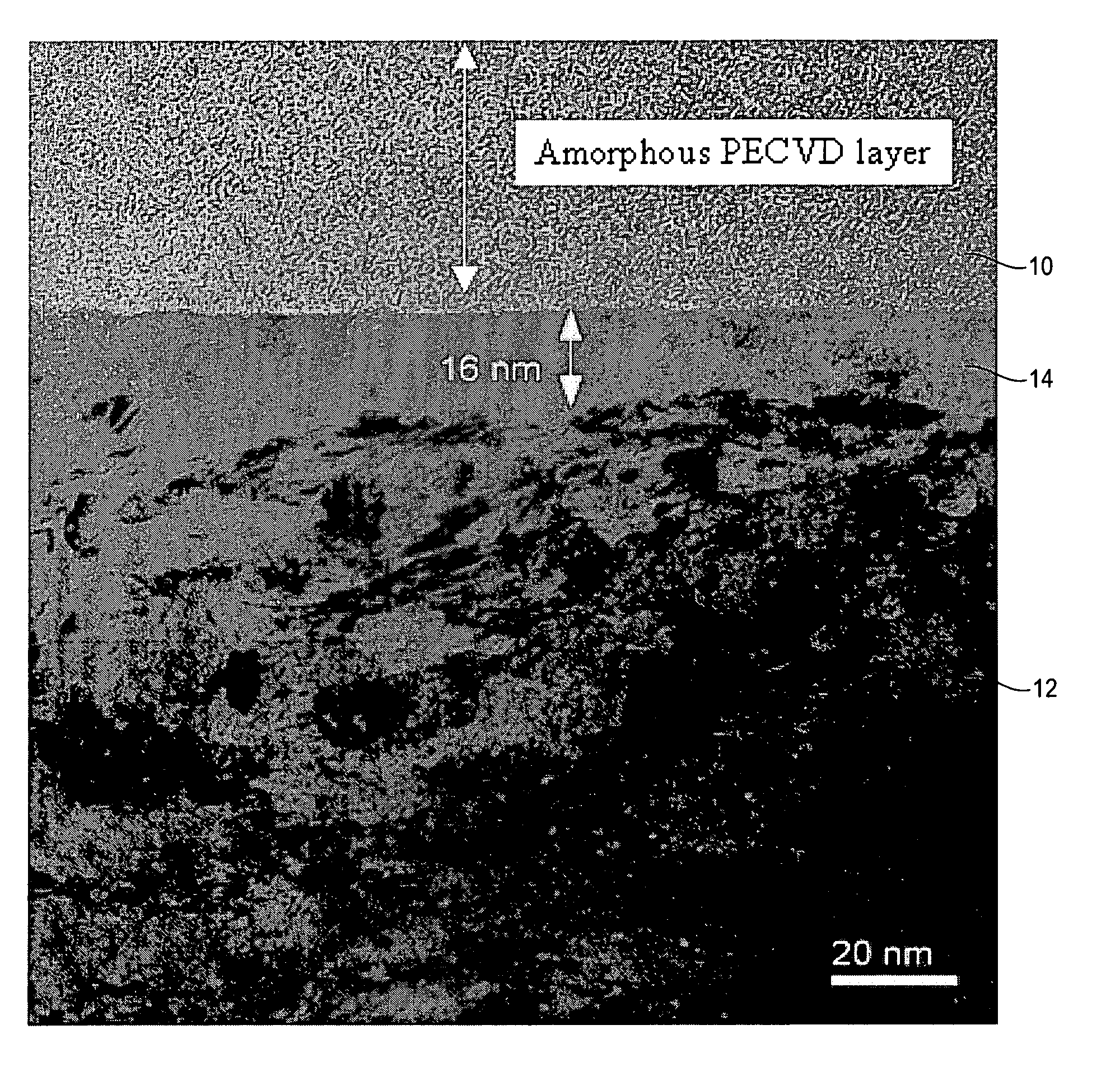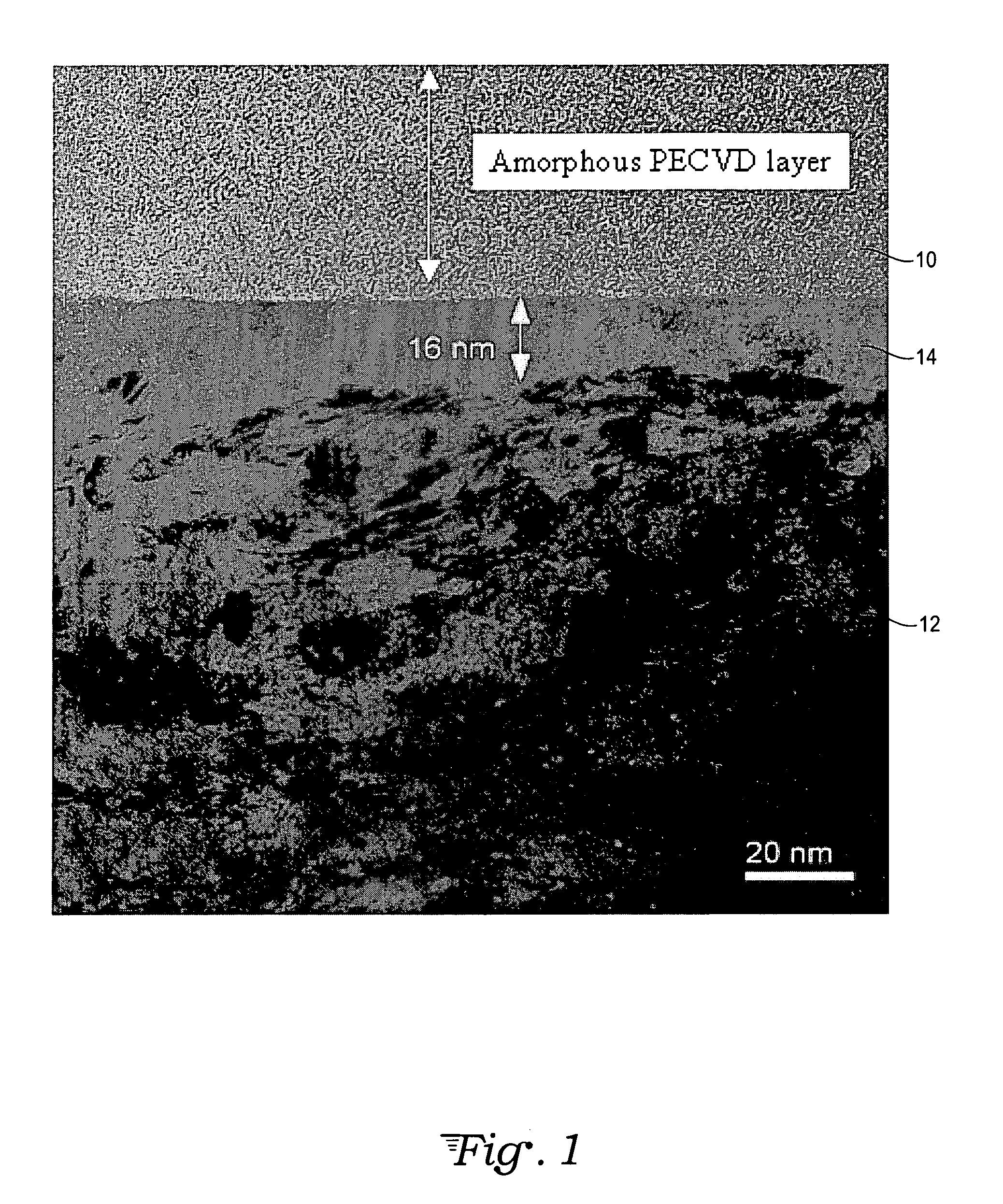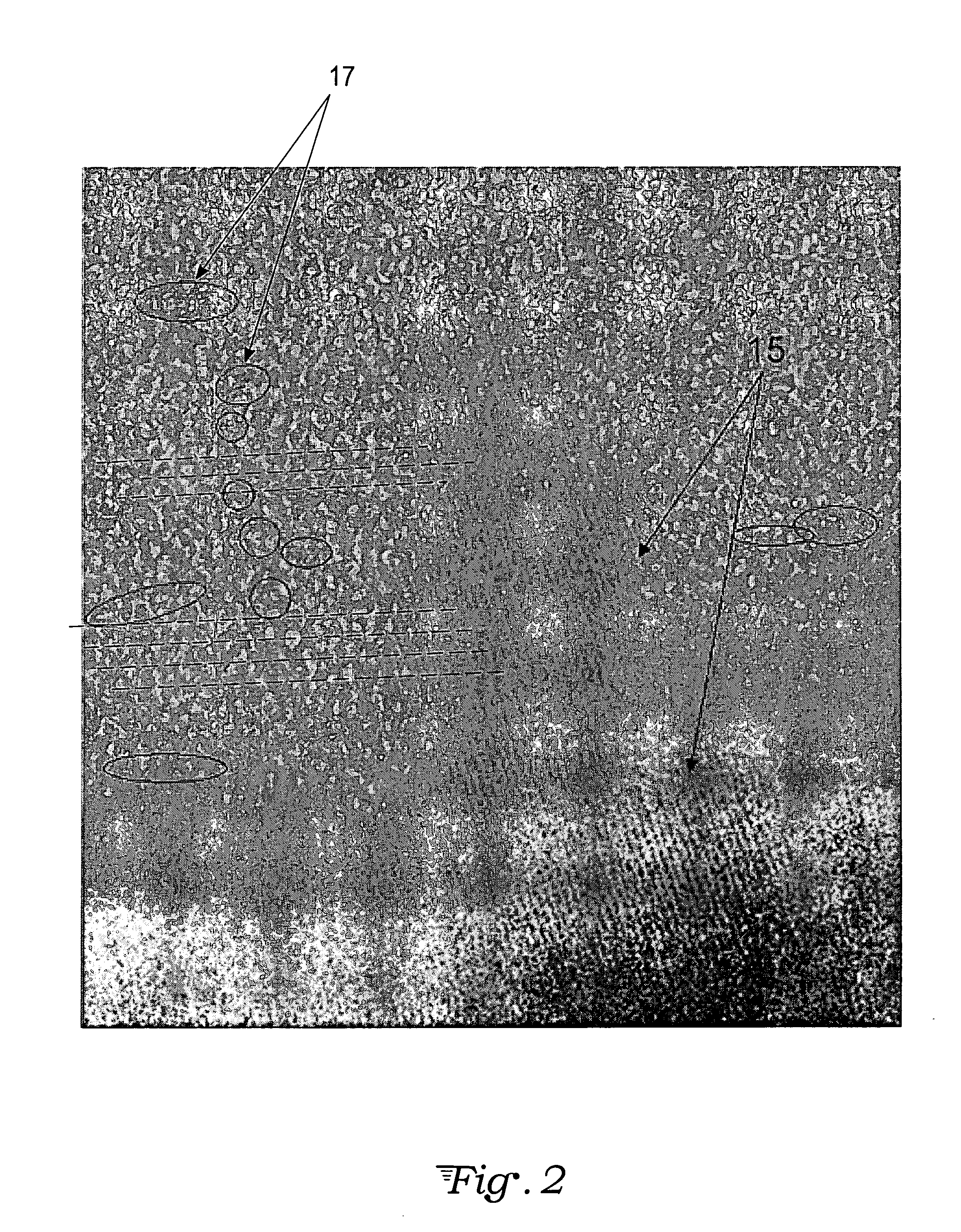Hybrid photovoltaically active layer and method for forming such a layer
a photovoltaic active and hybrid technology, applied in the field of solar cells, can solve the problems of high rate of recombination of photo-generated carriers, high photovoltaic efficiency, and large market response, and achieve high power dc pulsing, enhance excitation and oscillation rate, and increase the effect of tim
- Summary
- Abstract
- Description
- Claims
- Application Information
AI Technical Summary
Benefits of technology
Problems solved by technology
Method used
Image
Examples
Embodiment Construction
[0021]FIG. 1 shows an a-Si:H layer 10 formed on a steel substrate 12. The a-Si:H layer was formed using PECVD techniques. Additionally, the deposition of this layer occurred after establishing a hollow cathode effect within a deposition chamber, such as described in U.S. Pat. No. 7,300,684 to Boardman et al. and U.S. Patent Publication No. 2008 / 002994 to Tudhope et al., both of which are assigned to the assignee of the present invention. In relating the description of these two patent documents to the formation shown in FIG. 1, the steel substrate 12 is a workpiece in which the hollow cathode effect is established. Since the electron mean-free path is related to the inner diameter of the workpiece, the proper pressure setting will cause high energy electrons to oscillate between electron walls and an increase in ionizing collisions will occur. In establishing this condition, pressure must be decreased as the diameter of the workpiece is increased. As one possibility, a 25 millimeter...
PUM
| Property | Measurement | Unit |
|---|---|---|
| frequency | aaaaa | aaaaa |
| frequency | aaaaa | aaaaa |
| pressure | aaaaa | aaaaa |
Abstract
Description
Claims
Application Information
 Login to View More
Login to View More - R&D
- Intellectual Property
- Life Sciences
- Materials
- Tech Scout
- Unparalleled Data Quality
- Higher Quality Content
- 60% Fewer Hallucinations
Browse by: Latest US Patents, China's latest patents, Technical Efficacy Thesaurus, Application Domain, Technology Topic, Popular Technical Reports.
© 2025 PatSnap. All rights reserved.Legal|Privacy policy|Modern Slavery Act Transparency Statement|Sitemap|About US| Contact US: help@patsnap.com



